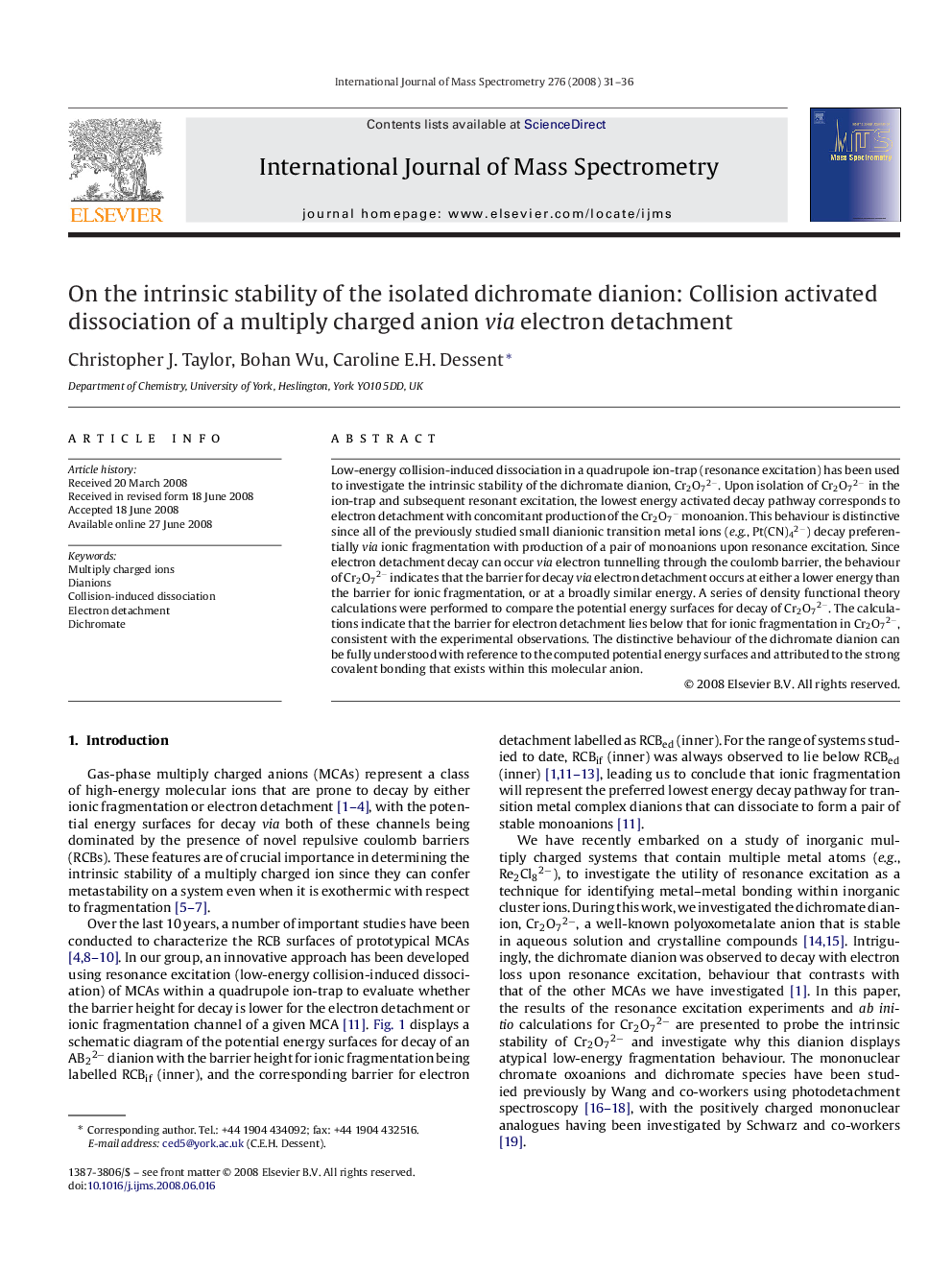| Article ID | Journal | Published Year | Pages | File Type |
|---|---|---|---|---|
| 1193814 | International Journal of Mass Spectrometry | 2008 | 6 Pages |
Low-energy collision-induced dissociation in a quadrupole ion-trap (resonance excitation) has been used to investigate the intrinsic stability of the dichromate dianion, Cr2O72−. Upon isolation of Cr2O72− in the ion-trap and subsequent resonant excitation, the lowest energy activated decay pathway corresponds to electron detachment with concomitant production of the Cr2O7− monoanion. This behaviour is distinctive since all of the previously studied small dianionic transition metal ions (e.g., Pt(CN)42−) decay preferentially via ionic fragmentation with production of a pair of monoanions upon resonance excitation. Since electron detachment decay can occur via electron tunnelling through the coulomb barrier, the behaviour of Cr2O72− indicates that the barrier for decay via electron detachment occurs at either a lower energy than the barrier for ionic fragmentation, or at a broadly similar energy. A series of density functional theory calculations were performed to compare the potential energy surfaces for decay of Cr2O72−. The calculations indicate that the barrier for electron detachment lies below that for ionic fragmentation in Cr2O72−, consistent with the experimental observations. The distinctive behaviour of the dichromate dianion can be fully understood with reference to the computed potential energy surfaces and attributed to the strong covalent bonding that exists within this molecular anion.
